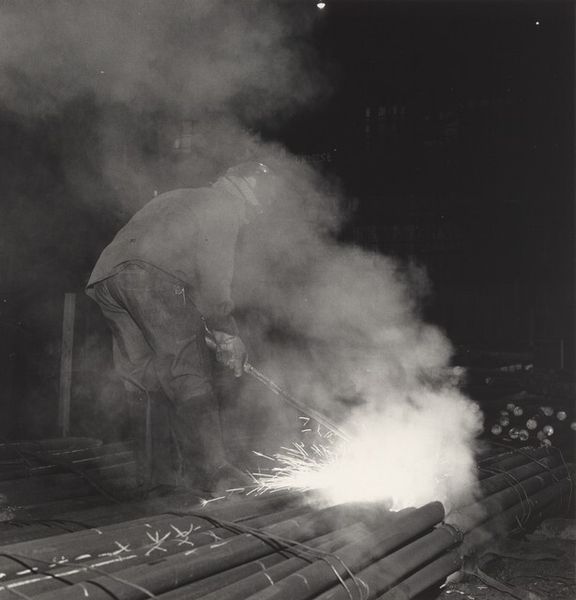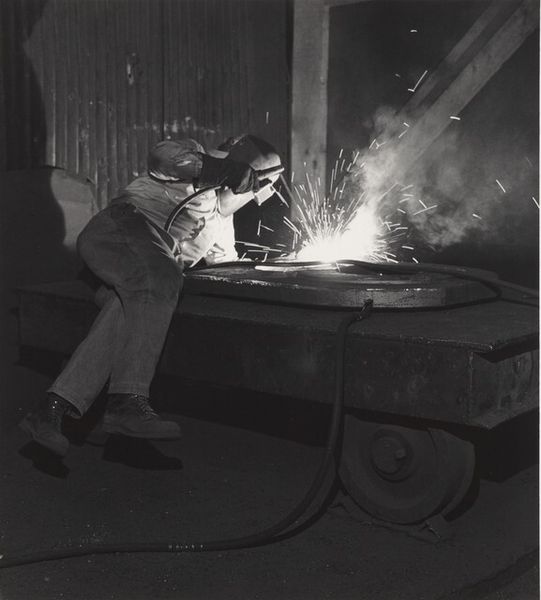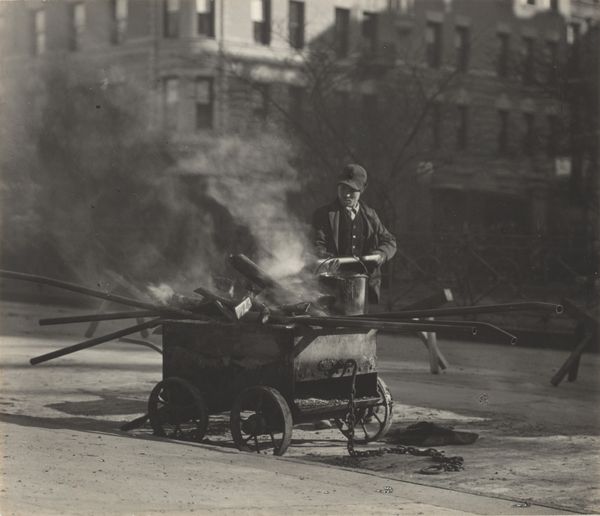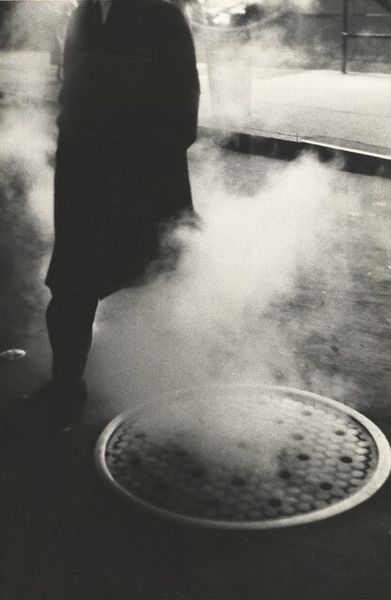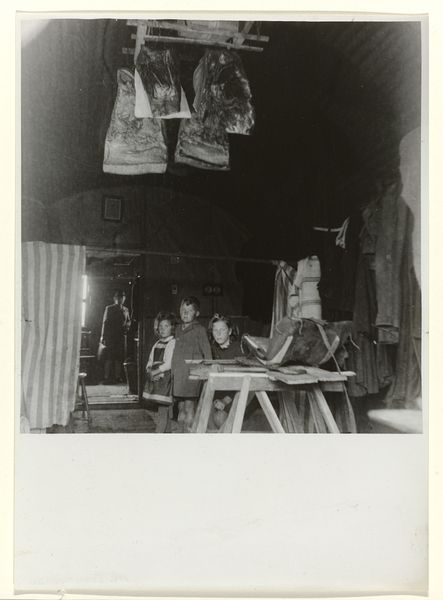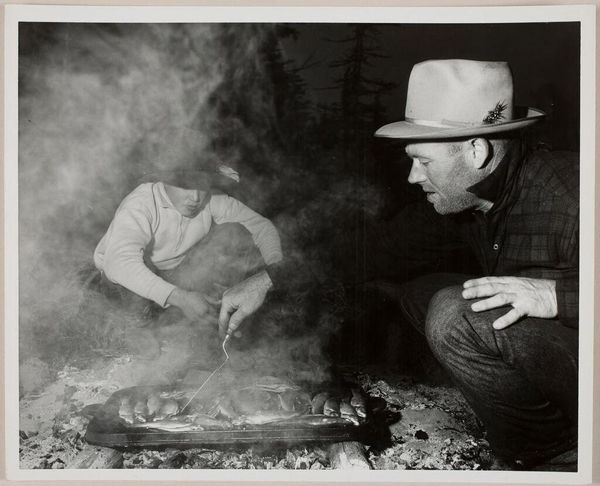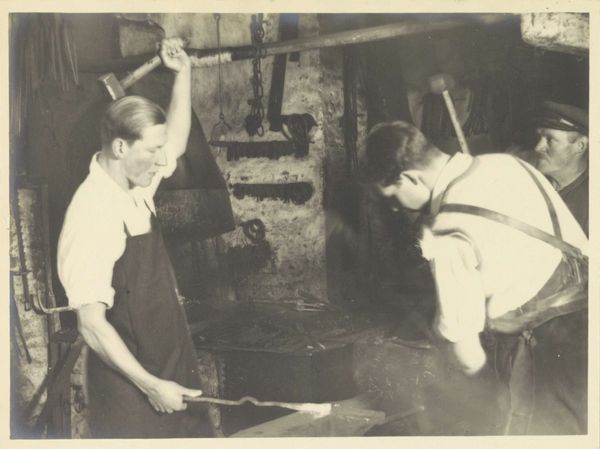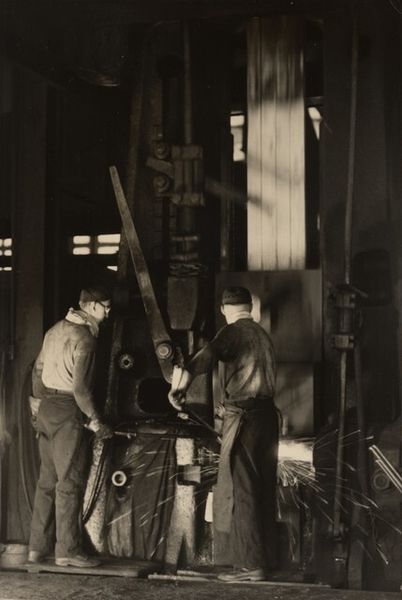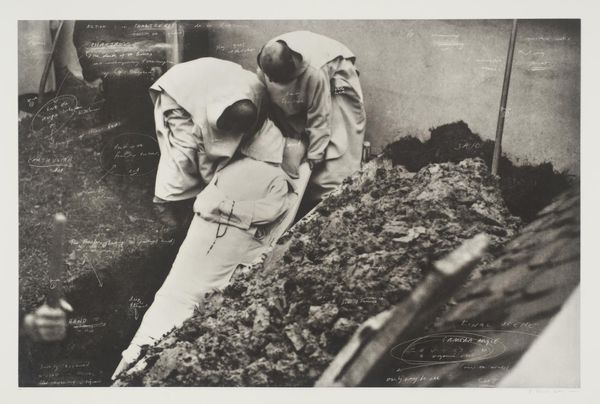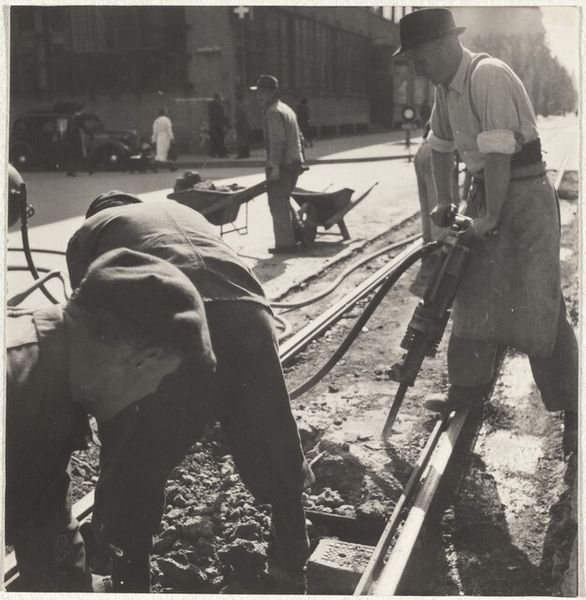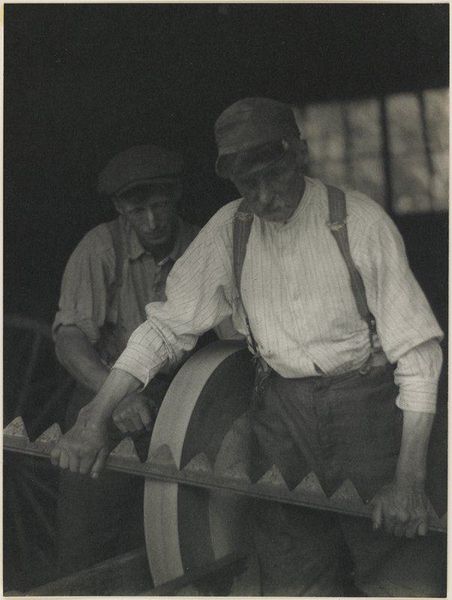
photography, gelatin-silver-print
#
portrait
#
landscape
#
outdoor photo
#
social-realism
#
archive photography
#
street-photography
#
photography
#
gelatin-silver-print
#
monochrome photography
#
ashcan-school
#
realism
#
monochrome
Dimensions: image: 21.8 x 18.1 cm (8 9/16 x 7 1/8 in.) sheet: 24 x 18.3 cm (9 7/16 x 7 3/16 in.)
Copyright: National Gallery of Art: CC0 1.0
Curator: I’m immediately struck by the near-spiritual quality of this photo. The haze obscures a great deal of detail, so you are left interpreting gestures. It is simultaneously grounded in labor, yet floating in affect. Editor: Absolutely. That haze you mention is actually steam, likely from a road-repair crew. What we're seeing is a gelatin-silver print from around 1941-1945 called “Streetworkers” by Robert Frank. Curator: The steam does veil much of what would have been visible and clear; I feel the two figures present like secular saints in its atmosphere. It softens the reality of the backbreaking work they were surely doing. But what do you make of the background elements: the building, the trees? How are they meant to serve in the construction of meaning? Editor: Well, think about Frank's broader social consciousness. The photo was taken during wartime. Labor shortages, rationing, an overwhelming sense of collective sacrifice. The blurred urban backdrop suggests the everyday world continuing amidst greater tensions and social upheaval. It places these workers not just in a street, but within a particular historical moment. Curator: That adds a crucial layer of interpretation. I hadn't considered the wartime context so directly. But beyond the immediate setting, there's also an enduring, almost mythic quality to manual labor isn’t it? The figure on the right, slightly more exposed than his companion, even bears a classical posture and demeanor. Editor: And yet there's nothing particularly ennobling in their task. It's a stark depiction of the working class that feels devoid of propaganda. It reflects a shift towards realism, mirroring the kind of unflinching approach championed by the Ashcan School of art decades prior, particularly those gritty urban scenes and candid portraiture. It is what it is. Curator: So the haziness lends it an almost allegorical power. It lifts these men, at the same time that their physical presence ties it to social conditions. Editor: Perhaps that ambiguity is the key. It can prompt varied perspectives, bridging the particular and the universal aspects of hard work, and doing it against the backdrop of immense world challenges. Curator: An open tableau then. It offers not a statement but rather the material for contemplation, and a little bit of collective respect. Editor: Precisely. It’s a conversation starter, more than a declaration, one that feels poignant even today.
Comments
No comments
Be the first to comment and join the conversation on the ultimate creative platform.
